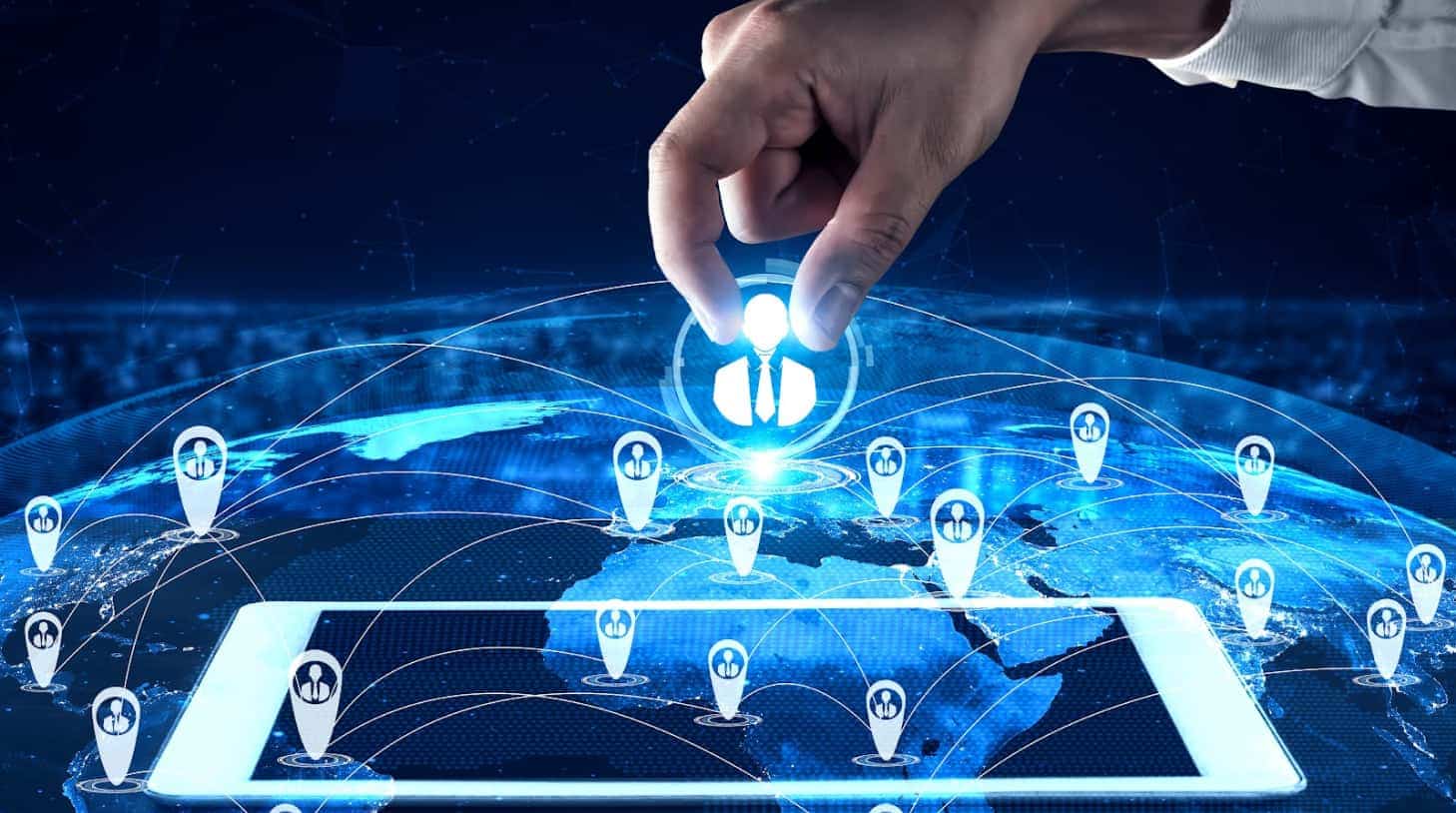HR software benefits: how HR tech helps you in your work
Increased digital transformation was predicted in a 2020 Workable survey to be one of the fundamental changes in the new world of work. We surveyed you again in 2022 and that prediction turned out to be true. That also applies to your work in human resources – and there are many benefits of introducing HR software to your ever-growing tech stack.

Contents
How does HR software benefit me?
HR software benefits your work in numerous ways – primarily in making your day-to-day easier and more manageable. This is especially crucial as overall processes move more quickly with the advent of workplace technology and employee turnover, engagement and retention are all crucial elements of employee management strategy.
Let’s look at a few of the ways in which HR software benefits you. Introducing HR software can help your team:
1. Manage a variety of HR tasks
Human resources isn’t just about clocking in and doing your required duties and then clocking out at the end of the day. You’re dealing with ebbs and flows in your workload on a regular basis. You’re multitasking your way through the processes of dozens or even hundreds of full-time employees, incoming and outgoing hires, often simultaneously.
A good HR software can help you stay on top of your work through automating the more repetitive tasks and optimizing the more complex ones.
2. Optimize your admin tasks
As above, administrative work becomes more efficient when using HR software. An added bonus is that all HR-related information is stored within the platform, making it easier to organize. Plus, you can automate some of the more menial and repetitive tasks.
3. Reduce paperwork
Storing your information electronically reduces the amount of cumbersome paperwork that needs to be stored and organized in filing cabinets, and eliminates the possibility of ‘misplaced’ documents. It also positions your company as more green-friendly when you’re using less paper in your day-to-day operations.
4. Instantly access information
When everything is stored in the cloud or even a local server, HR professionals will be able to access what they need right away.
Likewise, employees will be able to access the same without needing to communicate with HR to find out how many vacation days they have left, what the org chart looks like in their team, or what details are included in a specific workplace policy.
5. Monitor key performance indicators (KPIs)
Another way HR software benefits you is that you can track and report on your own performance as an HR professional. You can now easily stay on top of common KPIs of the HR function and monitor them regularly. For example:
Employee retention
Employee retention is fast becoming a key focal point of employers. The tenure of an employee is automatically recorded in your HR software, making it easy to stay current with your retention metrics and act accordingly.
Employee efficiency
Employee efficiency can be measured in a variety of ways – it can be in revenue per employee, time in office or on location, task completion, or something else. When employee information and activity is regularly logged in your HR software, you can pull up the data as needed.
Absenteeism
Employee presence is another key metric. Not only do you want to ensure your employees are adhering to their assigned work schedules, you also need to keep track of unavoidable factors that impact an employee’s attendance such as sickness, bereavement or stress. Whether excused or unexcused, absences can easily be recorded using HR software.
6. Provide a portal for employee feedback
A major benefit of HR software is that it provides a platform to collect feedback and insights from employees using employee surveys – a crucial ingredient in employee engagement and retention. Your colleagues feel valued as team members when their voices are heard and acted on.
7. Increase employee engagement
Providing employees with regular feedback in turn is likewise powerful. Not only is it an opportunity to recognize and validate an employee’s achievements and successes, it also helps them understand where they need to focus their efforts to get better at their job. This contributes to a more positive overall working environment.
8. Handle disputes & conflict resolution
Even the best companies deal with disputes and conflicts from time to time. Some of these can be legally sensitive – particularly when it involves harassment or an employee being dismissed – so it’s crucial to keep a record of complaints and incidents and how they’re being addressed. Moreover, having these tangibly and objectively recorded can remove potentially illegal bias and wrongdoings as well as provide the groundwork towards a healthy resolution.
Connecting Employees and Resources
HR software streamlines the linkage between employees and vital resources. Serving as a centralized hub, it provides immediate access to personal data, training modules, and organizational information. Integrated knowledge-sharing features promote peer-to-peer learning and resource exchange, while benefits portals allow for effortless management of personal perks.
Moreover, by integrating with enterprise systems, HR platforms ensure that employees are seamlessly connected to a broader spectrum of resources, simplifying tasks and bolstering productivity. In essence, HR software fortifies the employee-resource nexus, ensuring optimal utilization and engagement.
1. Enhancing Communication and Collaboration
Centralized collaboration spaces foster unified project approaches, while feedback tools promote constructive dialogue. By seamlessly integrating with popular communication platforms, HR systems reduce barriers and promote fluid inter-departmental exchanges. This digital synergy, powered by HR software, not only bridges communication gaps but also fosters a cohesive, transparent, and innovation-driven work environment.
2. Compliance and Reporting
With automated tracking of legislative updates, organizations can effortlessly adapt to changing labor laws and industry standards. Integrated reporting tools offer customizable templates and analytics, facilitating timely, accurate, and insightful reports on employee performance, attendance, and other HR metrics. Moreover, data security measures within the software protect sensitive employee information, ensuring adherence to data protection regulations. By automating and centralizing these functions, HR software minimizes the risk of oversights and penalties while enhancing operational efficiency.
3. Analytics and Insights
By aggregating employee data, from performance metrics to engagement levels, these systems generate comprehensive dashboards and reports. This analytical prowess allows managers to identify trends, predict turnover, optimize talent allocation, and assess training needs. Furthermore, predictive analytics can forecast recruitment needs and identify potential leadership candidates. By converting raw data into actionable insights, HR software empowers organizations to make data-driven decisions, enhancing productivity and fostering continuous improvement.
Effective employee management with HR software
Managing employees is complex. Not only are you leading them and supporting them in everything they do, you also have to keep track of the core elements such as hours, pay, benefits and performance. Let’s look at the various ways in which HR software benefits employee management:
1. Time management
Even with the advent of flexible work as a mainstay in the work world, fixed schedules are still commonplace and continue to be a standard in many industries especially in hospitality and manufacturing just to name a couple.
Team managers need to implement and assign schedules and ensure that their direct reports adhere to them, and be able to see how those schedules look from a macro perspective.
Plus, companies need to maintain a record of time especially when employees are paid by the hour, to ensure that they’re paid accordingly. Add overtime and other variants, and you have a lot to be responsible for. HR software can support you here.
2. Training and development
Training is a staple of the employee experience, whether it’s setting new hires for success or preparing existing employees on new processes, tools and strategies.
Training can be conducted in person, but also virtually via pre-recorded videos and documentations. You can also schedule trainings for employees new and old, and track their progress and completion of training blocks as required. Your HR software helps with all that.
3. Payroll and benefits
Software enables HR professionals to quickly and accurately process payroll information, manage employee benefits, and generate reports.
It enables employers to efficiently manage their payroll and ensure accuracy by eliminating manual entry of payroll data. You can also track employee information such as pay rate, deductions, taxes, and other deductions, plus personal information, job titles, and other data via your HR software.
4. Performance management
Part of employee management is performance management. You can set objectives and goals in your HR software, allowing you to monitor progress, provide feedback and develop skills.
You can tailor this to the specific needs of your company, and set up a replicable process to set employees for success. Managers and team members will be able to see where they stand against a preset baseline in terms of performance. Managers can also identify opportunities for growth and improvement via performance reviews and people data using HR software.
5. Hiring and onboarding
Companies can also effectively manage the recruitment and onboarding process using the applicant tracking features in an HR software, making it easier to find, evaluate, hire, and onboard new employees.
HR software also benefits the process through streamlining of processes, and employers can quickly access the information they need. Many HR softwares have a capable ATS included, which enables you to create job postings and promote them online, as well as track candidates through the hiring funnel through to onboarding and beyond.
6. Minimize human errors
To err is human. Forgiveness is divine, but you don’t want to have errors in your HR management in the first place. HR software supports a single stream of organization and information that drastically reduces the potential for errors in your HR management. That includes misplaced paperwork, poor or non-existent tracking, calculation errors, or other very human trip-ups.
7. Company-wide organization
HRIS software benefits company-wide organization of the many different processes owned by the HR function. This is especially valuable for medium-sized and enterprise-level businesses where multiple teams and users are involved in the system.
8. Security and privacy
When working in HR, you’re handling sensitive information – and increasing levels of data privacy legislation mean that you must maintain a high level of security and privacy in doing so. When you have an ISO-certified HR software, this becomes much easier.
Which key features should HR software have?
If you’re shopping around for HR software for your organization, there are a few key ingredients that should be standard in any HR tech. Included among them are:
1. Centralized database for employees
A centralized database for employees would be used to store and manage employee information, such as employee name, contact information, job title, salary, and other personal details.
Managers and HR professionals can also search for employee records, make updates to employee information, and track employee performance.
Employers can also quickly identify and hire new employees based on their skills, qualifications, and experience, and quickly access payroll information, analyze employee trends, and generate reports on employee performance.
Not only that, but this information can be accessed by employees as needed.
2. The ability to track and onboard hires
Tracking and onboarding of potential hires can be done through a variety of methods, such as using recruiting software, setting up applicant tracking systems, and conducting interviews.
Recruiting software can be used to track applicants’ resumes, contact information, and other relevant information. Applicant tracking systems can be used to review applications, conduct interviews, evaluate candidates, and ultimately determine their suitability for a job.
HR software should also include sufficient onboarding capabilities, providing orientation and training, setting up online accounts, and creating a welcoming environment for newly hired employees.
3. Tools to administer & measure employee benefits
Administering employee benefits involves setting up and managing the employee benefits program, including selecting a provider and enrolling employees. This includes providing information and education to employees about their benefits, helping them to make informed decisions, and updating them on any changes.
Measuring employee benefits also involves collecting and analyzing data to evaluate the success and effectiveness of such a program. This may include tracking employee satisfaction, absenteeism, turnover rate, and other relevant metrics.
Your HR software should also help you regularly review and update the employee benefits program to ensure that it is meeting the needs of both employees and the organization.
4. Maintain a payroll system
The payroll system in your HR software should make it relatively low-lift and consistent when paying employees and contractors for their work. This includes calculating wages and deductions, generating paychecks, issuing direct deposits, printing tax forms, and providing detailed reports on payroll expenses.
Payroll systems don’t usually stand on their own as a technology – they’re typically integrated with a company’s accounting software, HR system, and other business systems.
5. Ensure timekeeping & scheduling
Timekeeping and scheduling are important in a business setting as they help to ensure that employees are working the necessary hours and that tasks are completed within the allotted time.
Not only that – they’re a fundamental part of compensation especially when paying by the hour and when overtime is concerned.
A third element is compliance; many countries have legislations in place that regulate the number of hours typically worked in a week.
So, an HR software should ideally include capabilities to cover all of the above.
6. Generate reports
HR software also supports report generation for users to build custom reports from a database. Reports can be customized with a variety of visualizations and exported to a variety of formats.
Some software packages also offer automated report generation, which allows users to schedule reports to run at regular intervals.
The benefits of HR software
Clearly, HR software benefits organizations in numerous ways. If this is your first time learning about HR software, you can also take a deep dive into our HR software guide and learn more about HRIS software specifically.




